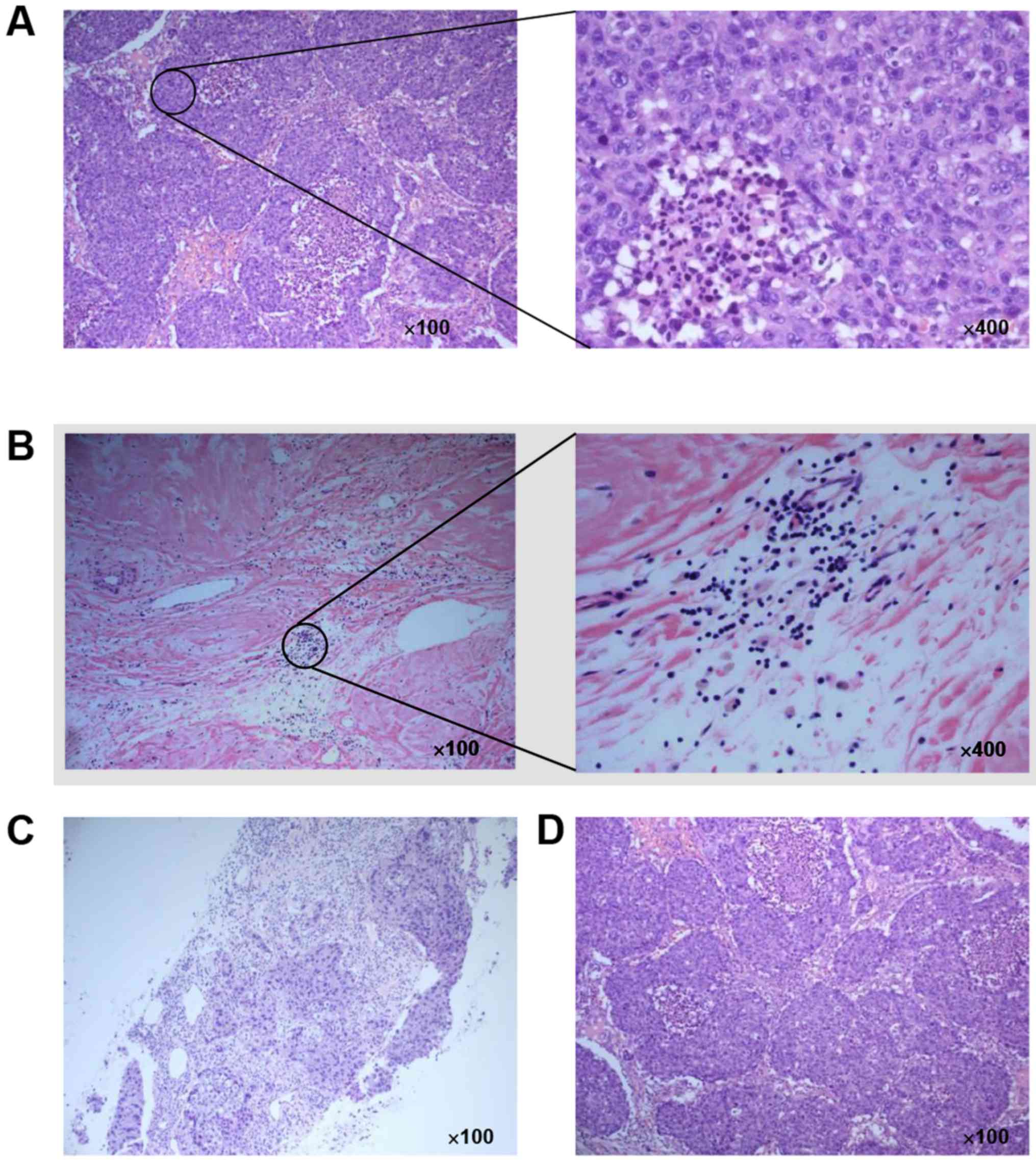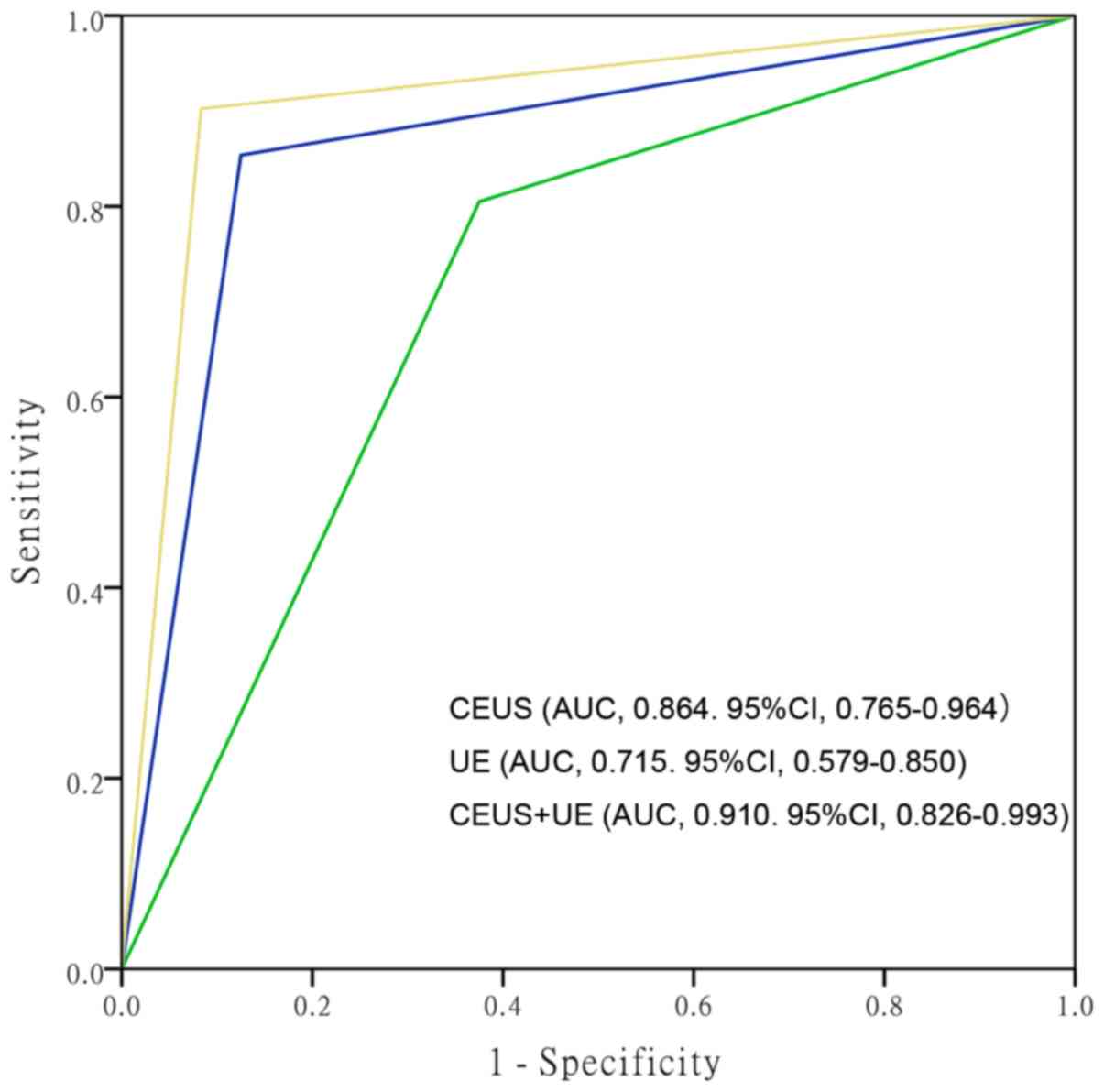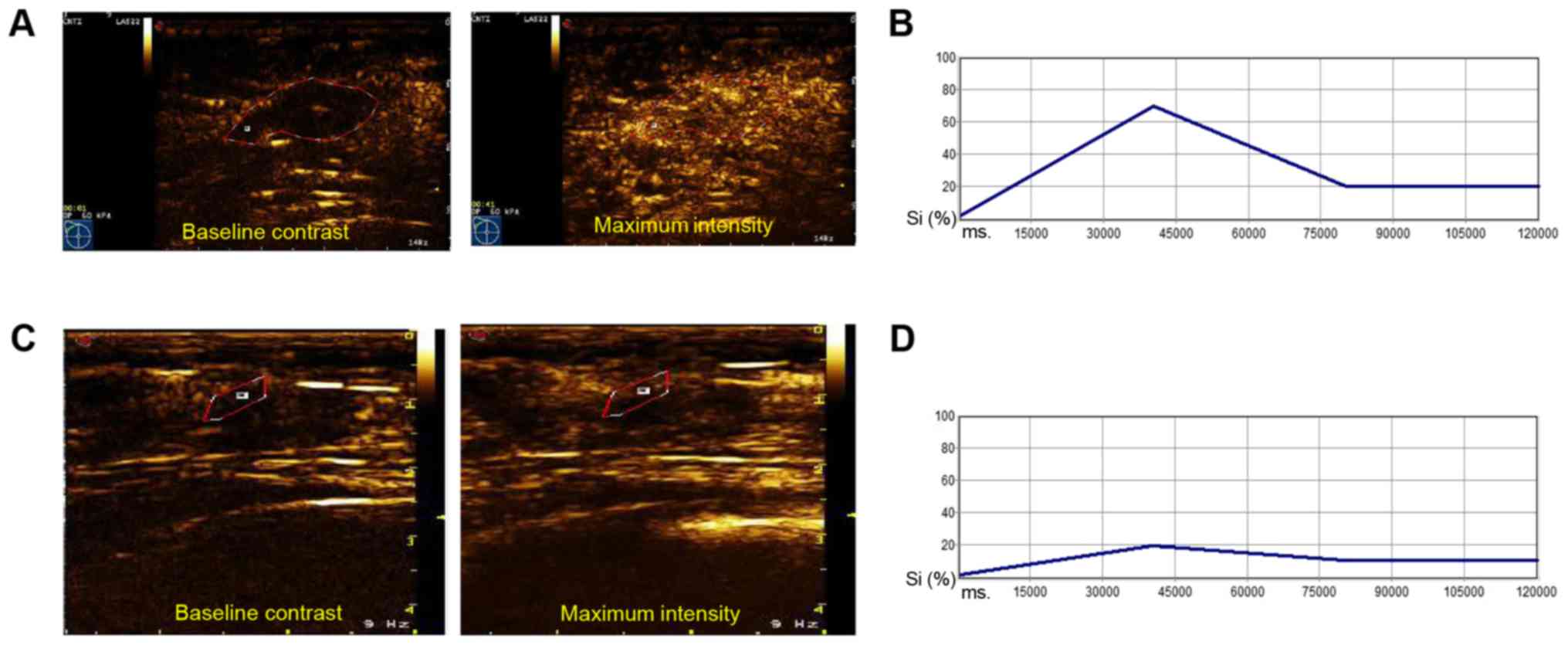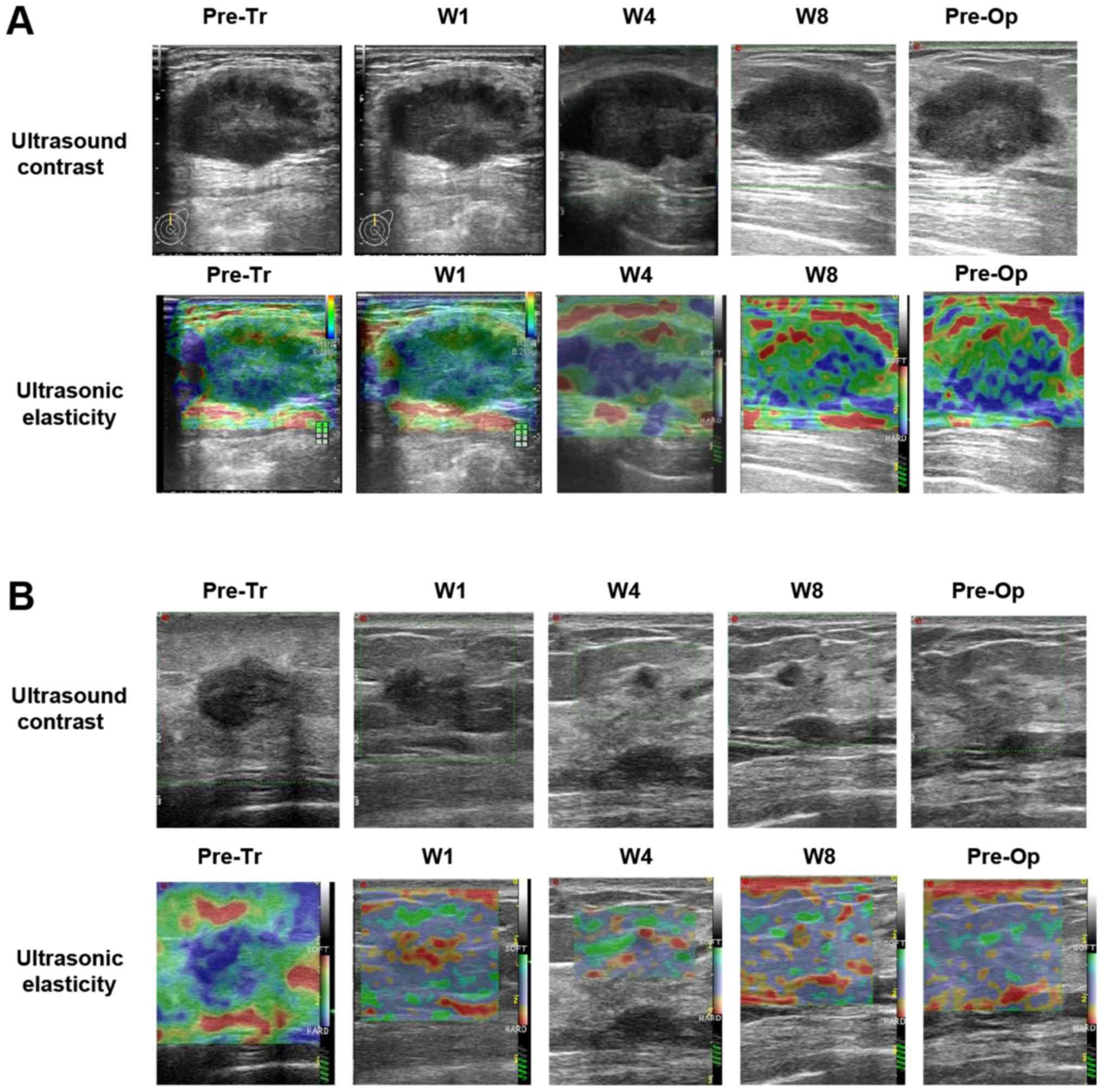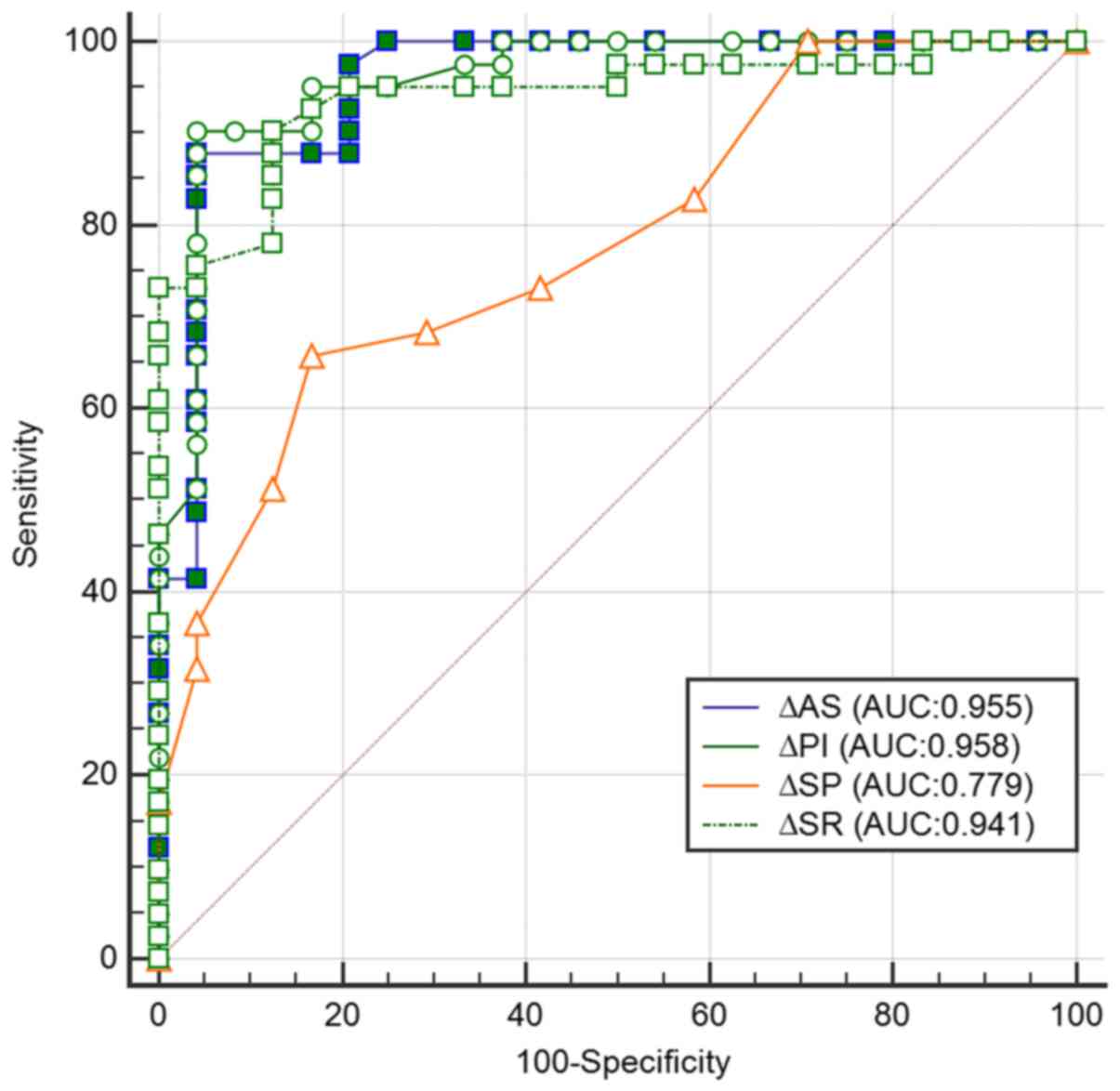|
1
|
Calado A, Neves PM, Santos T and Ravasco
P: The effect of flaxseed in breast cancer: A literature review.
Front Nutr. 5:42018. View Article : Google Scholar : PubMed/NCBI
|
|
2
|
Nakayama T, Sagara Y, Takashima T,
Matsunami N, Masuda N, Miyoshi Y, Taguchi T, Aono T, Ito T,
Kagimura T and Noguchi S: Randomized phase II study of anastrozole
plus tegafur-uracil as neoadjuvant therapy for ER-positive breast
cancer in postmenopausal Japanese women (Neo-ACET BC). Cancer
Chemother Pharmacol. 81:755–762. 2018. View Article : Google Scholar : PubMed/NCBI
|
|
3
|
Oeffinger KC, Fontham ET, Etzioni R,
Herzig A, Michaelson JS, Shih YC, Walter LC, Church TR, Flowers CR,
LaMonte SJ, et al: Breast cancer screening for women at average
risk: 2015 guideline update from the American Cancer Society. JAMA.
314:1599–1614. 2015. View Article : Google Scholar : PubMed/NCBI
|
|
4
|
Vidula N and Rugo HS: Cyclin-dependent
kinase 4/6 inhibitors for the treatment of breast cancer: A review
of preclinical and clinical data. Clin Breast Cancer. 16:8–17.
2016. View Article : Google Scholar : PubMed/NCBI
|
|
5
|
Guo C, Sung H, Zheng S, Guida J, Li E, Li
J, Hu N, Deng J, Figueroa JD, Sherman ME, et al: Age-related
terminal duct lobular unit involution in benign tissues from
Chinese breast cancer patients with luminal and triple-negative
tumors. Breast Cancer Res. 19:612017. View Article : Google Scholar : PubMed/NCBI
|
|
6
|
Zuo TT, Zheng RS, Zeng HM, Zhang SW and
Chen WQ: Female breast cancer incidence and mortality in China,
2013. Thorac Cancer. 8:214–218. 2017. View Article : Google Scholar : PubMed/NCBI
|
|
7
|
McKevitt EC, Dingee CK, Leung SP, Brown
CJ, Van Laeken NY, Lee R and Kuusk U: Reduced time to breast cancer
diagnosis with coordination of radiological and clinical care.
Cureus. 9:e19192017.PubMed/NCBI
|
|
8
|
Nassar FJ, Nasr R and Talhouk R: MicroRNAs
as biomarkers for early breast cancer diagnosis, prognosis and
therapy prediction. Pharmacol Ther. 172:34–49. 2017. View Article : Google Scholar : PubMed/NCBI
|
|
9
|
Nagashima T, Sakakibara M, Sangai T,
Kazama T, Nakatani Y and Miyazaki M: Tumor reduction rate predicts
early recurrence in patients with breast cancer failing to achieve
complete response to primary chemotherapy. Breast Cancer.
17:125–130. 2010. View Article : Google Scholar : PubMed/NCBI
|
|
10
|
Chu W, Jin W, Liu D, Wang J, Geng C, Chen
L and Huang X: Diffusion-weighted imaging in identifying breast
cancer pathological response to neoadjuvant chemotherapy: A
meta-analysis. Oncotarget. 9:7088–7100. 2018. View Article : Google Scholar : PubMed/NCBI
|
|
11
|
Cunningham D, Allum WH, Stenning SP,
Thompson JN, Van de Velde CJ, Nicolson M, Scarffe JH, Lofts FJ,
Falk SJ, Iveson TJ, et al: Perioperative chemotherapy versus
surgery alone for resectable gastroesophageal cancer. N Engl J Med.
355:11–20. 2006. View Article : Google Scholar : PubMed/NCBI
|
|
12
|
Galli G, Bregni G, Cavalieri S, Porcu L,
Baili P, Hade A, Di Salvo F, Sant M, Agresti R, Gennaro M, et al:
Neoadjuvant chemotherapy exerts selection pressure towards luminal
phenotype breast cancer. Breast care (Basel). 12:391–394. 2017.
View Article : Google Scholar : PubMed/NCBI
|
|
13
|
Alekseev NP, Vladimir II and Nadezhda TE:
Pathological postpartum breast engorgement: Prediction, prevention,
and resolution. Breastfeed Med. 10:203–208. 2015. View Article : Google Scholar : PubMed/NCBI
|
|
14
|
Amioka A, Masumoto N, Gouda N, Kajitani K,
Shigematsu H, Emi A, Kadoya T and Okada M: Ability of
contrast-enhanced ultrasonography to determine clinical responses
of breast cancer to neoadjuvant chemotherapy. Jpn J Clin Oncol.
46:303–309. 2016. View Article : Google Scholar : PubMed/NCBI
|
|
15
|
Charehbili A, Wasser MN, Smit VT, Putter
H, van Leeuwen-Stok AE, Meershoek-Klein Kranenbarg WM, Liefers GJ,
van de Velde CJ, Nortier JW and Kroep JR: Accuracy of MRI for
treatment response assessment after taxane- and anthracycline-based
neoadjuvant chemotherapy in HER2-negative breast cancer. Eur J Surg
Oncol. 40:1216–1221. 2014. View Article : Google Scholar : PubMed/NCBI
|
|
16
|
Singh G, Kumar P, Parshad R, Seith A,
Thulkar S and Hosten N: Role of color Doppler indices in predicting
disease-free survival of breast cancer patients during neoadjuvant
chemotherapy. Eur J Radiol. 75:e158–e162. 2010. View Article : Google Scholar : PubMed/NCBI
|
|
17
|
Yang T, Zhang Z, Liu G, Mu D, Sun X, Chen
Z, Liu Y, Wang C, Sun X and Wang Y: Accuracy of MRI for estimating
residual tumor size after neoadjuvant chemotherapy in breast cancer
with three-dimensional reconstruction technique. Zhonghua Wai Ke Za
Zhi. 53:280–284. 2015.(In Chinese). PubMed/NCBI
|
|
18
|
Baghbani F, Chegeni M, Moztarzadeh F,
Mohandesi JA and Mokhtari-Dizaji M: Ultrasonic nanotherapy of
breast cancer using novel ultrasound-responsive alginate-shelled
perfluorohexane nanodroplets: In vitro and in vivo evaluation.
Mater Sci Eng C Mater Biol Appl. 77:698–707. 2017. View Article : Google Scholar : PubMed/NCBI
|
|
19
|
Falou O, Sadeghi-Naini A, Prematilake S,
Sofroni E, Papanicolau N, Iradji S, Jahedmotlagh Z, Lemon-Wong S,
Pignol JP, Rakovitch E, et al: Evaluation of neoadjuvant
chemotherapy response in women with locally advanced breast cancer
using ultrasound elastography. Transl Oncol. 6:17–24. 2013.
View Article : Google Scholar : PubMed/NCBI
|
|
20
|
Garnier M, Champeaux E, Laurent E, Boehm
A, Briard O, Wachter T, Vaillant L, Patat F, Bens G and Machet L:
High-frequency ultrasound quantification of acute radiation
dermatitis: Pilot study of patients undergoing radiotherapy for
breast cancer. Skin Res Technol. 23:602–606. 2017. View Article : Google Scholar : PubMed/NCBI
|
|
21
|
Keune JD, Jeffe DB, Schootman M, Hoffman
A, Gillanders WE and Aft RL: Accuracy of ultrasonography and
mammography in predicting pathologic response after neoadjuvant
chemotherapy for breast cancer. Am J Surg. 199:477–484. 2010.
View Article : Google Scholar : PubMed/NCBI
|
|
22
|
Ma Y, Zhang S, Li J, Li J, Kang Y and Ren
W: Comparison of strain and shear-wave ultrasounic elastography in
predicting the pathological response to neoadjuvant chemotherapy in
breast cancers. Eur Radiol. 27:2282–2291. 2017. View Article : Google Scholar : PubMed/NCBI
|
|
23
|
Itoh A, Ueno E, Tohno E, Kamma H,
Takahashi H, Shiina T, Yamakawa M and Matsumura T: Breast disease:
Clinical application of US elastography for diagnosis. Radiology.
239:341–350. 2006. View Article : Google Scholar : PubMed/NCBI
|
|
24
|
Duffaud F and Therasse P: New guidelines
to evaluate the response to treatment in solid tumors. Bull Cancer.
87:881–886. 2000.(In French). PubMed/NCBI
|
|
25
|
Eisenhauer EA, Therasse P, Bogaerts J,
Schwartz LH, Sargent D, Ford R, Dancey J, Arbuck S, Gwyther S,
Mooney M, et al: New response evaluation criteria in solid tumours:
Revised RECIST guideline (version 1.1). Eur J Cancer. 45:228–247.
2009. View Article : Google Scholar : PubMed/NCBI
|
|
26
|
Baulies S, Belin L, Mallon P, Senechal C,
Pierga JY, Cottu P, Sablin MP, Sastre X, Asselain B, Rouzier R and
Reyal F: Time-varying effect and long-term survival analysis in
breast cancer patients treated with neoadjuvant chemotherapy. Br J
Cancer. 113:30–36. 2015. View Article : Google Scholar : PubMed/NCBI
|
|
27
|
Kern P, Von Minckwitz G, Puetter C,
Pavlidou S, Flach A, Kimmig R and Rezai M: Prognostic impact of
residual disease after neoadjuvant chemotherapy in 648 patients
with triple-negative breast cancer. Anticancer Res. 35:5479–5484.
2015.PubMed/NCBI
|
|
28
|
Miyoshi T, Shiobara M, Wakatsuki K, Arai
S, Suda K, Miyazawa K, Aida T, Takahashi Y and Yoshioka S: Four
cases of occult breast cancer treated with breast conserving
therapy after neoadjuvant chemotherapy. Gan To Kagaku Ryoho.
44:1149–1151. 2017.(In Japanese). PubMed/NCBI
|
|
29
|
Ohno N, Ishida M, Ohnishi K, Sawai K,
Tabata S, Deguchi M, Kitajima T and Kaizaki Y: A case of
pathological complete response following neoadjuvant chemotherapy
with gemcitabine plus nab-paclitaxel in borderline resectable
pancreatic cancer. Gan To Kagaku Ryoho. 44:1735–1738. 2017.(In
Japanese). PubMed/NCBI
|
|
30
|
Lee SC, Grant E, Sheth P, Garcia AA, Desai
B, Ji L, Groshen S, Hwang D, Yamashita M and Hovanessian-Larsen L:
Accuracy of contrast-enhanced ultrasound compared with magnetic
resonance imaging in assessing the tumor response after neoadjuvant
chemotherapy for breast cancer. J Ultrasound Med. 36:901–911. 2017.
View Article : Google Scholar : PubMed/NCBI
|
|
31
|
Zhou J, Luo Y, Ma BY, Ling WW and Zhu XL:
Contrast-enhanced ultrasound diagnosis of hepatic metastasis of
concurrent medullary-papillary thyroid carcinoma: A case report.
Medicine (Baltimore). 96:e90652017. View Article : Google Scholar : PubMed/NCBI
|
|
32
|
Sasada S, Masumoto N, Goda N, Kajitani K,
Emi A, Kadoya T and Okada M: Dedicated breast PET for detecting
residual disease after neoadjuvant chemotherapy in operable breast
cancer: A prospective cohort study. Eur J Surg Oncol. 44:444–448.
2018. View Article : Google Scholar : PubMed/NCBI
|
|
33
|
Weber JJ, Jochelson MS, Eaton A, Zabor EC,
Barrio AV, Gemignani ML, Pilewskie M, Van Zee KJ, Morrow M and
El-Tamer M: MRI and prediction of pathologic complete response in
the breast and Axilla after neoadjuvant chemotherapy for breast
cancer. J Am Coll Surg. 225:740–746. 2017. View Article : Google Scholar : PubMed/NCBI
|
|
34
|
Girotra M, Soota K, Dhaliwal AS, Abraham
RR, Garcia-Saenz-de-Sicilia M and Tharian B: Utility of endoscopic
ultrasound and endoscopy in diagnosis and management of
hepatocellular carcinoma and its complications: What does
endoscopic ultrasonography offer above and beyond conventional
cross-sectional imaging? World J Gastrointest Endosc. 10:56–68.
2018. View Article : Google Scholar : PubMed/NCBI
|
|
35
|
Jia WR, Tang L, Wang DB, Chai WM, Fei XC,
He JR, Chen M and Wang WP: Three-dimensional contrast-enhanced
ultrasound in response assessment for breast cancer: A comparison
with dynamic contrast-enhanced magnetic resonance imaging and
pathology. Sci Rep. 6:338322016. View Article : Google Scholar : PubMed/NCBI
|
|
36
|
Xu HD and Zhang YQ: Evaluation of the
efficacy of neoadjuvant chemotherapy for breast cancer using
diffusion-weighted imaging and dynamic contrast-enhanced magnetic
resonance imaging. Neoplasma. 64:430–436. 2017. View Article : Google Scholar : PubMed/NCBI
|
|
37
|
Dietrich CF, Averkiou M, Nielsen MB, Barr
RG, Burns PN, Calliada F, Cantisani V, Choi B, Chammas MC, Clevert
DA, et al: How to perform Contrast-Enhanced Ultrasound (CEUS).
Ultrasound Int Open. 4:E2–E15. 2018. View Article : Google Scholar : PubMed/NCBI
|
|
38
|
Ang J, Hu L, Huang PT, Wu JX, Huang LN,
Cao CH, Zheng YX and Chen L: Contrast-enhanced ultrasonography
assessment of gastric cancer response to neoadjuvant chemotherapy.
World J Gastroenterol. 18:7026–7032. 2012. View Article : Google Scholar : PubMed/NCBI
|
|
39
|
Kitamura H, Koike S, Nakazawa K, Matsumura
H, Yokoi K, Nakagawa K and Arai M: A reversal in the vascularity of
metastatic liver tumors from colorectal cancer after the cessation
of chemotherapy plus bevacizumab: Contrast-enhanced ultrasonography
and histological examination. J Surg Oncol. 107:155–159. 2013.
View Article : Google Scholar : PubMed/NCBI
|
|
40
|
Yerli H, Yilmaz T, Kaskati T and Gulay H:
Qualitative and semiquantitative evaluations of solid breast
lesions by sonoelastography. J Ultrasound Med. 30:179–186. 2011.
View Article : Google Scholar : PubMed/NCBI
|
|
41
|
Zhu Y, Deng S, Zhang Y and Jiang Q:
Comparative study of ultrasonic elastography and conventional
ultrasound in diagnosis of malignant anus neoplasm. Exp Ther Med.
15:2343–2346. 2018.PubMed/NCBI
|
















